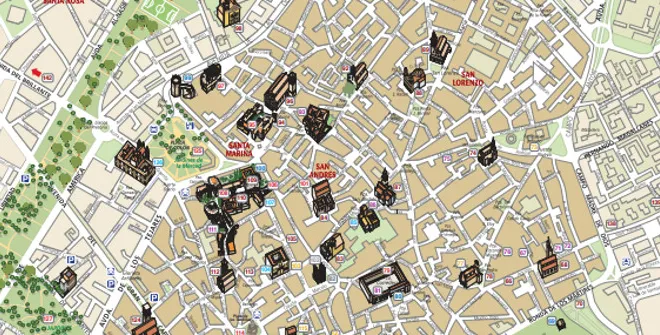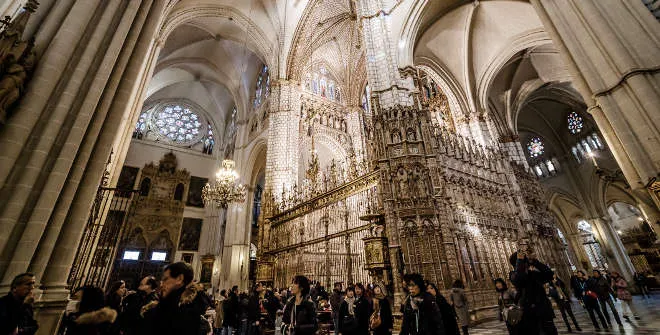Córdoba
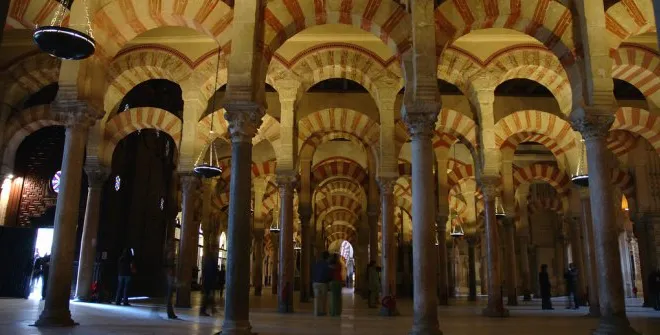
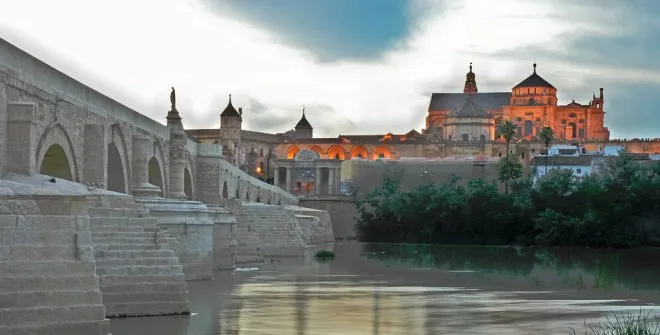
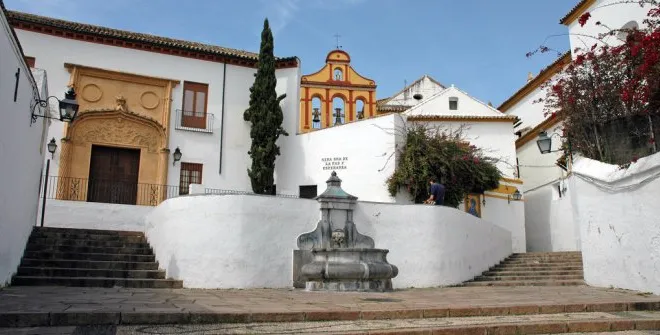
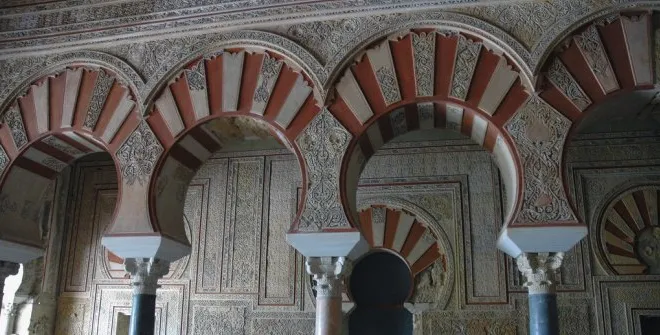
Córdoba is the rightful heir to the architectural gems left by the different cultures that settled in the Iberian Peninsula. Below is a list of the highlights of the rich artistic legacy of this beautiful city.
The Great Mosque embodied the power of Islam in the West. Its construction commenced in 785 AD on the site of a church consecrated to St. Vincent. The original mosque had several extensions in the consecutive periods of Al-Andalus and more changes were introduced by the Christians following the Reconquista. The Mosque has an architectural forest populated by columns and arches. The Mihrab in this old place of worship is a richly ornamented prayer niche that held a gilt copy of the Koran. Other outstanding features are the coffered ceiling and the arches and pillars with decorated bases and shafts in a variety of colours that create a dazzling visual effect.
The Jewish temple’s construction began in 1315. On the upper level is the women’s gallery. The prayer room has three richly decorated balconies with small multi-lobed arches, and on the east end there opens a tabernacle for holding the Torah.
Built for Caliph Abd al-Rahman III, this glorious palace just a few kilometres north of Córdoba was to become the seat of the Caliphate government and symbol of its power. However, its glory was short-lived and today only the ruins remain. The Medina Azahara featured a rich hall, a huge portico, the house of Yafar and the mosque.
Alcázar of the Catholic Monarchs
King Alfonso XI had the alcázar (palace-fortress) built in 1328. During the reign of the Catholic Monarchs it was royal residence for eight years. The Mudejar style is apparent in the tranquil courtyards and gardens of this construction defended by four turrets named Paloma (dove), Homenaje (tribute), Leones (lions) and Inquisición (Inquisition) that make a square-shaped structure. The main hall or Mosaic Hall, with magnificent tiles and an ancient third-century sarcophagus, is really remarkable.
Roman Bridge
Built across the river Guadalquivir, it links Campo de la Verdad and Barrio de la Catedral and connected Córdoba with the rest of the Peninsula. It’s also known as Puente Viejo (Old Bridge). It’s 331-m-long and is supported by 16 arches.
Images courtesy of Cordoba’s Department of Tourism
Córdoba has a strong artisan heritage. Famous for its gems and leather goods, the city has been making jewellery since Roman times. Today, it holds a 20% share in the province’s industry. Leather is used to make saddles, pieces of furniture and screens, the most typical material being cordobán, a quality soft, smooth leather from a goatskin.
Córdoba’s gastronomy uses the whole range of produce from the fields and the sierra, and shows the influence of Muslim cuisine, especially in aromatic herbs like oregano, tarragon or mint leaves, and other ingredients like rice, aubergines or spinach.
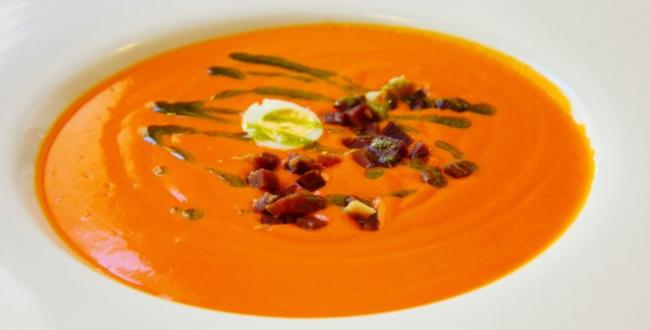
Choose from Córdoba’s most traditional dishes: salmorejo (chilled tomato cream soup), rabo de toro (oaxtail stew), flamenquín (veal, ham and cheese rolls), manitas de cerdo a la cordobesa (Córdoba-style hand of pork) and perol (rice dish with chicken and beans). The food is served with a glass of superb Montilla-Moriles white wine or Pedro Ximénez fine sweet wine.
You can start your tapas tour in the Plaza de las Tendillas, before moving onto the Plaza de la Corredera and the Plaza de las Cañas, finishing up in the Plaza de Abades, a very pretty little square in the old Jewish Quarter or Judería, with very popular outdoor terrace areas, such as El Barón. You can also visit the restaurant, El Churrasco, located inside the World Heritage Historic-Artistic Site, and the establishment, El Caballo Rojo, focusing on gastronomy from Cordoba, a reflection of the Andalusian culinary culture with designation of origin.
Amongst the traditional fiestas of the region are Easter, Batalla de las Flores, literally ‘the battle of flowers’, in which men on horse throw carnations down to the people lining the streets, and they throw the flowers back to the horsemen, May Crosses, Fair of Our Lady of Good Health, and the International Guitar Festival.
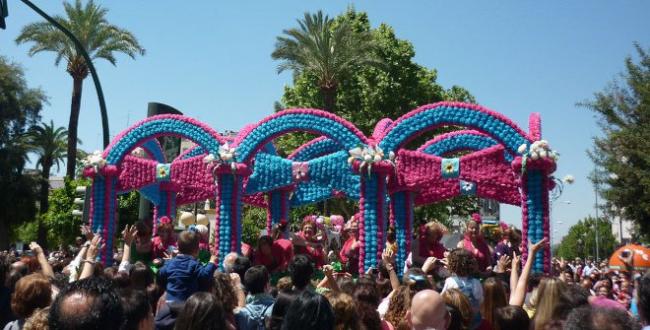
Images courtesy of Cordoba’s Department of Tourism
Bathed by the river Guadalquivir and sheltered by the Sierra Morena, Córdoba made the perfect location for several civilisations – Roman, Visigoth, Muslim and Christian – that came to establish themselves here. In 1984, the city was included in the list of World Heritage Sites by Unesco.
The earliest human settlements date back to the period of the Neanderthal man. In the Pre-Roman era, the city started to grow and prosper. With the arrival of the Romans in 206 BC, the city of Corduba was founded to become the capital of Hispania Ulterior and then of Hispania Baetica. Actually, the Romans loved Corduba and turned it into a centre of Roman civilisation that could’ve perfectly eclipsed the capital of the Empire.
With the fall of the Roman Empire, Corduba was left to the advancing Vandals and Visigoths, who built their own churches and buildings, turning off the glittering light of the Roman era. Fortunately, Córdoba was brought to life again by the Arabs, who under the command of Muslim General Tariq ibn-Ziyad who led the Islamic conquest of Visigothic Spain from 711 to 718 AD.
In only five years of Muslim rule in the Guadalquivir valley, Córdoba became the capital of Al-Andalus, and only half a century had passed when it came to be the gem in the Muslim crown. So much so that the Caliph commissioned the construction of the palace-city of Medina Azahara, several mosques and souks, tapestry factories and even hydraulic systems. But the Caliphate was to lose its grandeur under the administration of Al-Mansur and as a result of civil unrest. It disappeared in 1031 and acquired the status of taifa until it was seized by King Ferdinand III in 1236.
The following centuries were characterised by political stability. Currently, Córdoba is a living memoir to the main events in Spanish history. The city has kept important vestiges of the major city of Antiquity and the Middle Ages in the Iberian Penins.
Images courtesy of Cordoba’s Department of Tourism
- By Car: Córdoba is around 4 hours drive from Madrid if you take the A-4 motorway and the R-4 motorway.
- By Coach: 4 hours and 45 minutos from Madrid from the Estación Sur Coach Station (Méndez Álvaro).
- By Train: 1 hour and 42 minutes on the AVE from Atocha Station.
Links of Interest:
- Official Website Cordoba City Council
- Official Website of Córdoba Tourism
- Not to be missed: If you want to know more about this cultural influence in our city, see our article, Halal Tourism in Madrid.
Images courtesy of Cordoba’s Department of Tourism
OTHER TRAIN EXCURSIONS
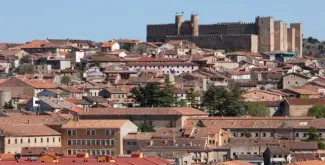
Medieval Train to Sigüenza
A wonderful and unique way of visiting a town steeped in history: 7 & 21 May, 4 & 16 June, 22 Sept, 1, 15 & 29 Oct 2022
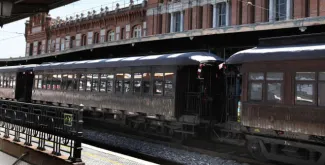
The Strawberry Train
A period train running between Madrid and Aranjuez recreates the Region of Madrid’s first rail line. Spring Season: Sat & Sun, from 22 April to 25 June.
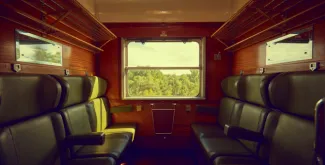
The Philip II Train
Travel from Madrid to San Lorenzo de El Escorial on a vintage train and unveil the secrets of King Philip II’s empire. Every week-end till 10 December.
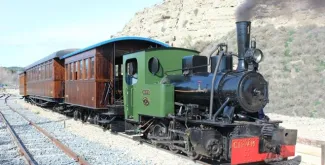
Arganda Train
Get on this vintage train whose steam locomotive pushes its way past stunning landscapes in southeast Madrid. Every Sunday, from 5 March to 28 May.
